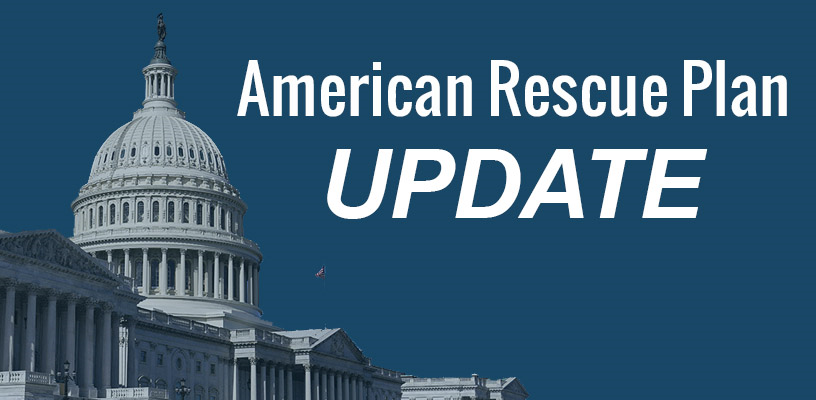The American Rescue Plan Act (ARPA) continues to evolve in a recipient-friendly effort by the U.S. Treasury to provide municipalities and other direct recipients of ARPA funding with greater flexibility in how the money is spent. The latest change took effect on November 20, 2023.
As a refresher, you may recall that at the time of its adoption on March 11, 2021, ARPA funds were to be used for five main categories of disaster relief:
- To directly respond to the public health emergency brought about by the Covid-19 pandemic;
- To respond to the “negative economic impacts” of the pandemic by providing grants to small businesses and others who suffered economic setbacks;
- To provide “premium pay” to essential workers in order to fund continuity of state and local government services during the pandemic;
- To offset at least some portion of revenue loss suffered by local governments due to the sharp decline in sales tax and other revenue streams;
- To make investments in water, sewer, or broadband infrastructure.
First change: Now up to $10 million can be used for any purpose
 The ARPA rules were quickly simplified to give municipalities the option of using a “standard allowance” of $10 million in ARPA funds to be designated as resulting from “revenue loss.” That meant that up to $10 million in ARPA funding could be used for any legitimate governmental purpose and did not have to comply with the five original U.S. Treasury regulations relating to the use of ARPA-grant funding.
The ARPA rules were quickly simplified to give municipalities the option of using a “standard allowance” of $10 million in ARPA funds to be designated as resulting from “revenue loss.” That meant that up to $10 million in ARPA funding could be used for any legitimate governmental purpose and did not have to comply with the five original U.S. Treasury regulations relating to the use of ARPA-grant funding.
Other natural disasters now allowed under ARPA
After a series of devastating natural disasters around the country, ARPA rules were later expanded to allow recipients to use the funding to pay for recovery efforts and negative economic impacts resulting from other natural disasters in addition to the Covid-19 pandemic. Recovery costs from declared disasters such as floods, hurricanes, and tornadoes are now eligible expenses under ARPA regulations.
Certain road and bridge projects are now eligible under ARPA
ARPA guidelines were also expanded to allow for 26 different types of transportation-infrastructure projects that include things like road surfacing, bridge repair and construction, and highway safety improvement programs.
ARPA money combined with CDBG grants open up new possibilities
Certain “Title I” projects tied to Community Development Block Grants (CDBG) are now eligible uses of ARPA funds. This can include things like land acquisition, rehabilitation of residential as well as non-residential structures, as well as demolition and removal of some buildings.
The latest expansion of the rules
Most recently, in November of 2023, the ARPA guidelines were amended yet again in order to help recipients meet the requirement that ARPA funds be “obligated” no later than December 31, 2024. Whereas the word “obligated” under the original ARPA guidelines meant having an actual signed contract or an official purchase order in place prior to that 2024 deadline, the rules have now been softened somewhat. Under this latest change, eligible costs that are ongoing expenses, e.g., costs of ARPA reporting and compliance; single audit expenses; record-retention requirements; environmental compliance; and even civil-rights mandates, will be eligible uses for ARPA funding even though these costs will be incurred prior to, as well as long after, December 31, 2024. Details on this change are available here: Obligation_Interim_Final_Rule_Quick_Reference_Guide_2023.pdf (treasury.gov)
I don’t know of a single local official who wants to return unexpended ARPA funds back to the U.S. government after the final spending deadline of December 31, 2026. The U.S. Treasury has been listening carefully to the concerns of local governments and they should be credited for their ongoing amendments to the ARPA guidelines which expand the ways the funds can be used. This is a great example of intergovernmental cooperation and common-sense changes to complex federal regulations based upon the input of concerned local municipal officials. Clearly, this is government at its best.


